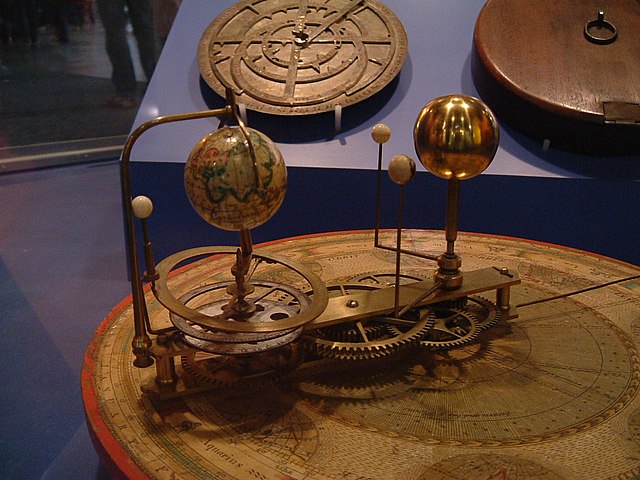The Royal Eise Eisinga Planetarium is an 18th-century orrery in Franeker, Friesland, Netherlands. It is currently a museum and open to the public. The orrery has been on the top 100 Dutch heritage sites list since 1990. In September 2023, it received the status of UNESCO World Heritage Site. It is the oldest working orrery in the world.
Front of the museum in 2007
The orrery
The mechanical works in the space above the ceiling that keep the mechanism in operation
An orrery is a mechanical model of the Solar System that illustrates or predicts the relative positions and motions of the planets and moons, usually according to the heliocentric model. It may also represent the relative sizes of these bodies; however, since accurate scaling is often not practical due to the actual large ratio differences, a subdued approximation may be used instead. Though the Greeks had working planetaria, the first orrery that was a planetarium of the modern era was produced in 1713, and one was presented to Charles Boyle, 4th Earl of Orrery – hence the name. They are typically driven by a clockwork mechanism with a globe representing the Sun at the centre, and with a planet at the end of each of the arms.
A small orrery showing Earth and the inner planets
Antikythera mechanism, main fragment, c. 205 to 87 BC
Carlo G Croce, reconstruction of Dondi's Astrarium, originally built between 1348 and 1364 in Padua
Astronomical clock (Venus-Mercury side) by Eberhard Baldewein, 1563–1568. Exhibit in the Mathematisch-Physikalischer Salon of Dresden, Germany.







